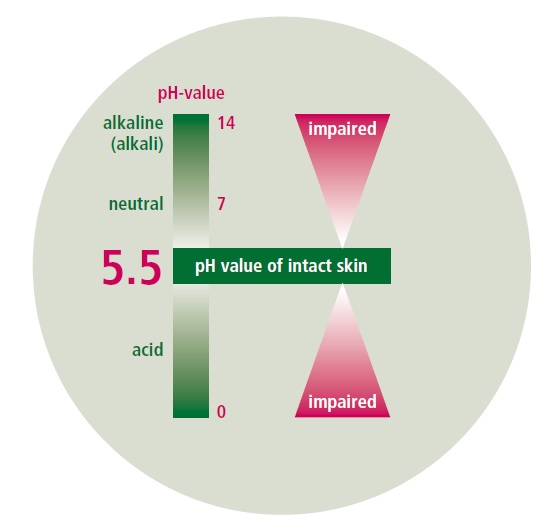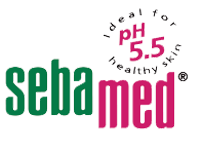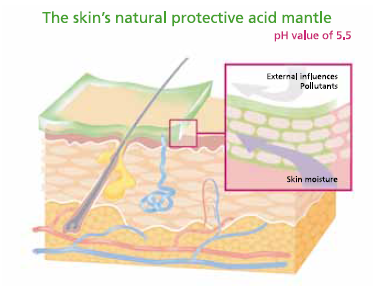What is pH?
pH (pons hydrogenii) is a parameter to determine acidity and alkalinity of solutions of substances dissolved in water. The exact definition of pH is: the negative decadic logarithm of the concentration of hydrogen ions in an aqueous solution. Important is the fact that pH values range from 0 to 14, with low values standing for acids and high values for lyes (alkaline solutions) and the middle is neutral. The further away the pH is from neutral, the stronger is the acid or lye. Water theoretically has a pH of 7, but in reality, distilled water is slightly acidic (pH approximately 6) due to carbon dioxide from the air dissolving in the water forming carbonic acid, whereas tap water contains salts which make it often slightly alkaline (pH 7.5 to 8). Blood and cells are near to neutral with pH 7.4. Gastric juice has pH 1-2, and bile pH 8 to 8.5. The skin surface has an average pH of 5.5.

What does the pH 5.5 do for the skin?
The acid mantle has various protective functions. For a long time it has been known to regulate the composition of the skin’s microflora. The skin is completely populated by many different micro-organisms, even directly after cleansing. These bacteria and fungi feed from the scales on the surface as well as sweat and the sebum. Most of them are completely harmless for our health.

However, many produce substances in their metabolism which smell unpleasant. They are the source of body odour. To minimize body odour and prevent an overgrowth or accumulation of irritant or even toxic microbial metabolites, regular skin cleansing is necessary. It is however not advisable to try to get rid of our lifetime companions completely by using disinfectants, as they form the first line of defense against intruding pathogenic micro-organisms.
As long as the skin is covered with the these harmless microbial species of the resident flora, there is almost no chance for pathogenic germs to settle and proliferate, because under the physiologically acidic conditions on the skin surface, the normal, harmless skin flora can flourish and suppress pathogenic organisms, which usually prefer neutral environments. The protective eco-system of the skin is supported by skin cleansing and care with pH 5.5, but damaged or even destroyed by neutral or alkaline products. An increased skin surface pH after cleansing or the application of skin care products with pH 6 or more will raise the rate of proliferation of pathogenic germs and hence the risk for skin infections.
Related Articles
you also may be interested in the below articles

Sebapharma
The Sebapharma GmbH & Co. KG is the owner of the brand sebamed. It is a modern family run business based in Boppard am Rhein,

Preface by Dr. Heinz Maurer
Skin care is a basic human need: it starts with cleanliness. Washing has also an integrative social role.

What is sebamed®?
sebamed is a medicinal skin care system. which has been developed as a system of prophylactic and regenerative skin care

